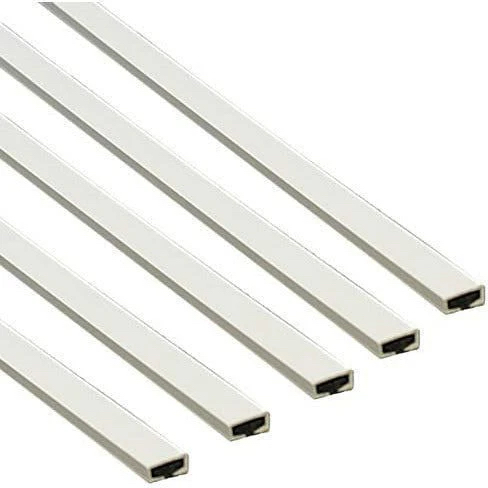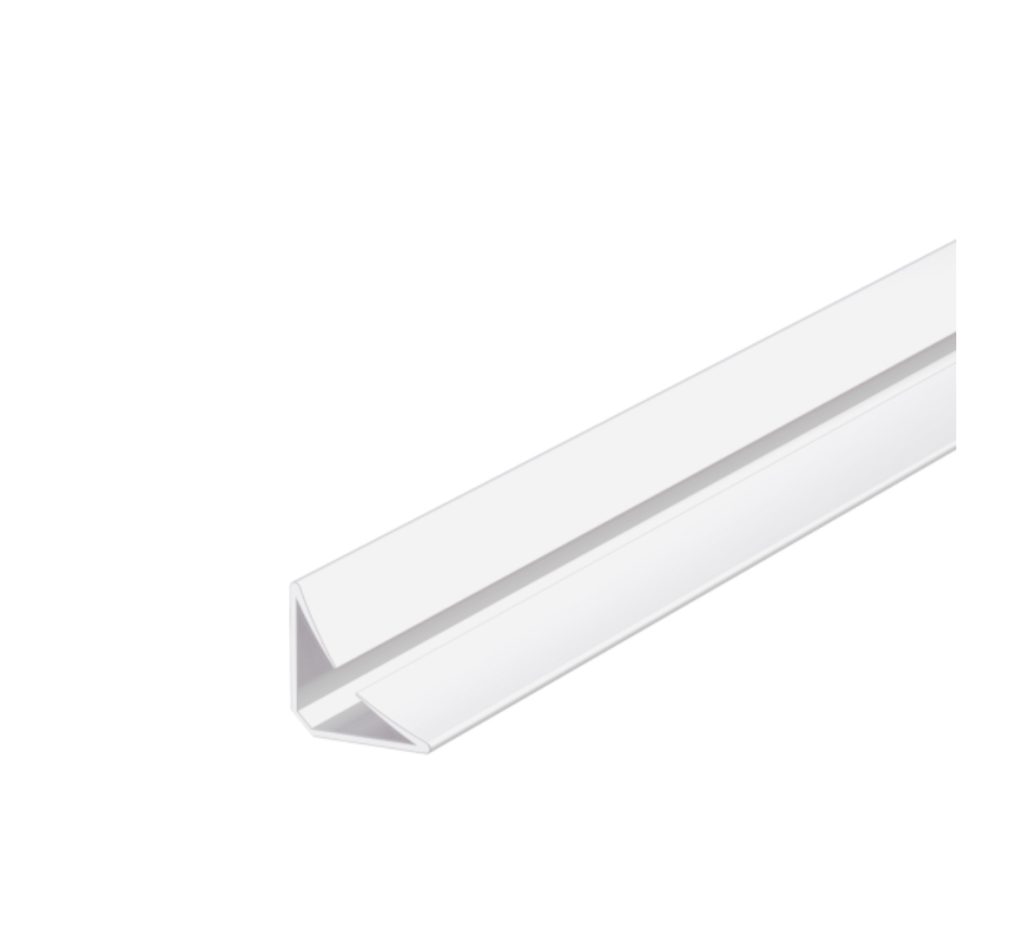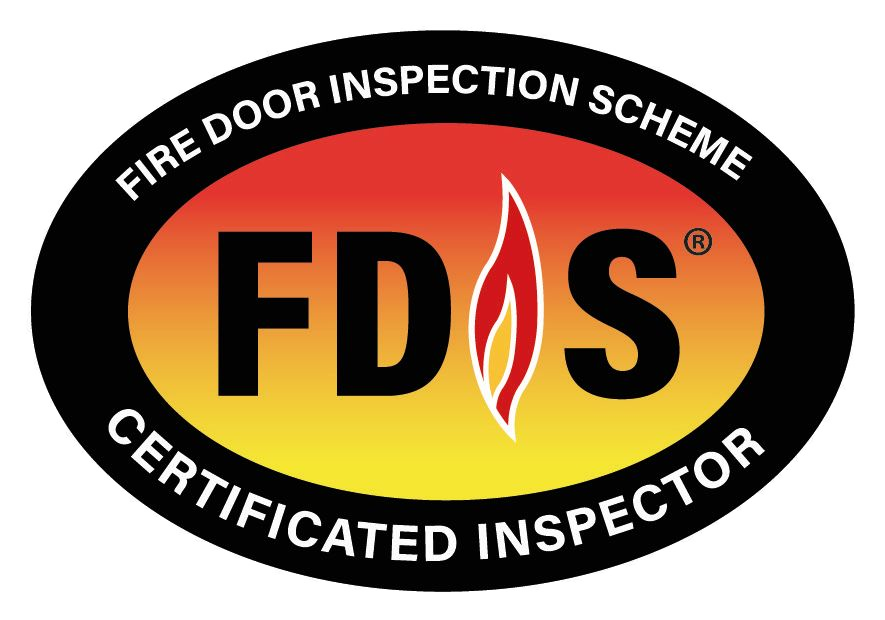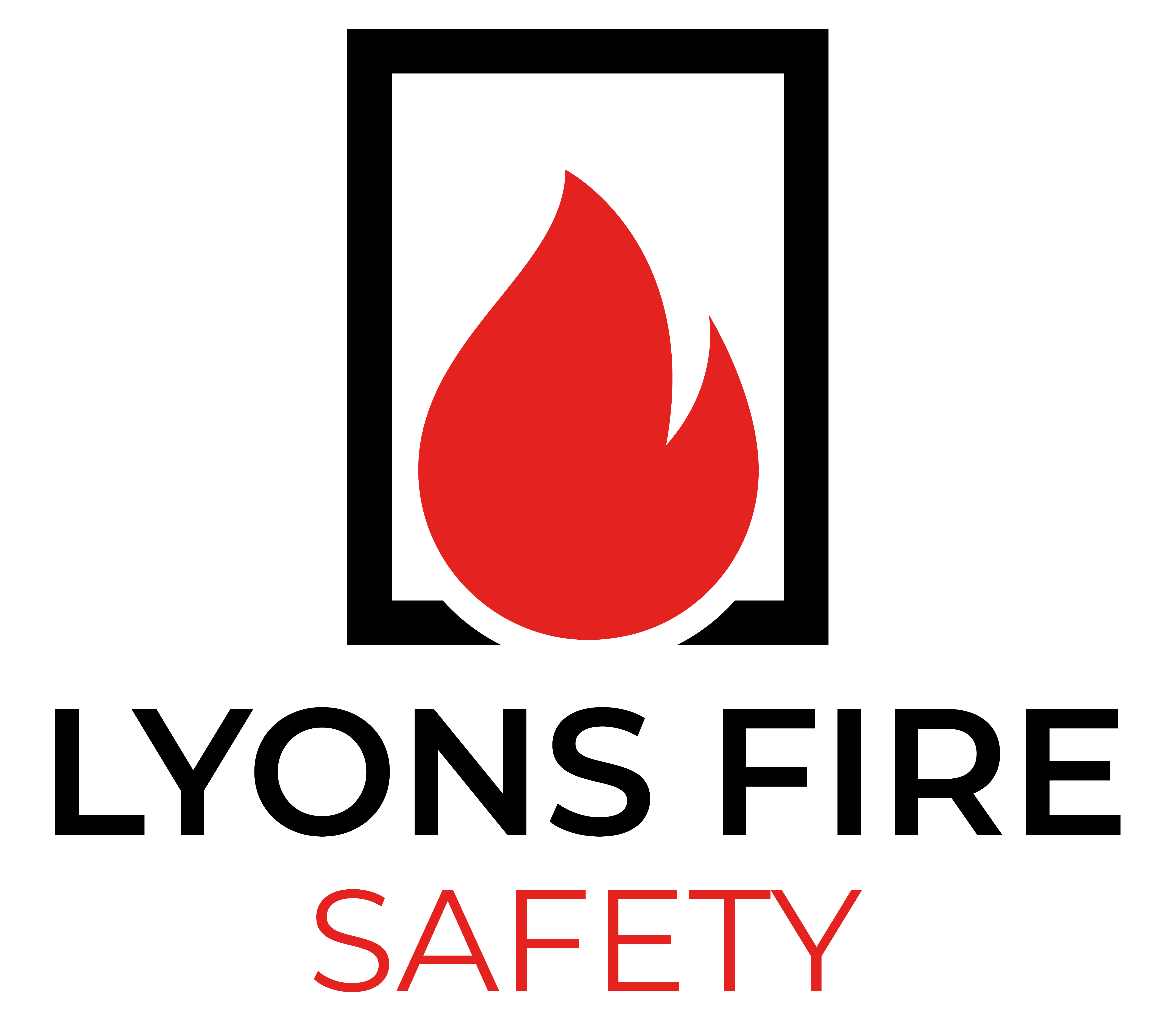The Critical Role of Intumescent Seals in Passive Fire Protection
At Lyons Fire Safety (LFS), we understand the vital importance of passive fire protection in safeguarding lives and property. Intumescent seals play a crucial role in this system, forming an essential barrier against the spread of fire and smoke.
In this comprehensive guide, we’ll explore the world of intumescent seals, their significance, and how to effectively select and maintain them.

Understanding Intumescent Seals
These seals are specialised materials designed to expand when exposed to heat, creating a robust barrier that helps contain fire and smoke within designated areas. These seals are a key component of passive fire protection systems, working silently but effectively to enhance building safety.
How do Intumescent Seals Work?
Normal state
In everyday conditions, intumescent seals remain inert and unobtrusive.
Activation by heat
When exposed to high temperatures, typically around 200°C, the seals begin to react.
Expansion and sealing
The material swells significantly, expanding up to 40 times its original size, effectively sealing gaps and preventing the passage of fire and smoke.
Types of Intumescent Seals
Several types are commonly used in passive fire protection:
- Fire door seals: Installed around the perimeter of fire doors to seal gaps when exposed to heat.
- Fire glazing seals: Used in fire-resistant glass assemblies to maintain integrity during a fire.
- Structural fire seals: Applied to joints and gaps in building structures to maintain compartmentation.
Excessive gaps between door leaves or around the door frame pose a serious risk to fire safety. According to BS 8214:2016 (Code of Practice for fire door assemblies), the maximum permissible gap between door leaves should generally not exceed 3mm. Gaps larger than this can allow smoke and flames to pass through, undermining the door’s integrity during a fire event.
Common signs of this issue include:
- Visible light passing through gaps when the door is closed
- Doors failing to close properly or seal effectively
- Inconsistent gaps around the door perimeter
How Intumescent Seals Address This Issue
This is where seals play a crucial role in fire door performance:
Gap Sealing
Intumescent seals expand when exposed to heat, effectively sealing gaps that might otherwise allow fire and smoke to spread.
Customisable Fit
These seals can be precisely fitted to address varying gap sizes, ensuring comprehensive protection even in doors with minor installation issues.
Smoke Control
Many intumescent seals also incorporate smoke brushes or fins, providing an additional barrier against cold smoke infiltration.
Compliance Support
Properly installed intumescent seals help fire doors meet regulatory requirements by addressing gap-related issues.

At LFS, we’ll provide a thorough inspections, and resolve any issues with remedial works. Whether you run a facility, a public building, a residential space, or institution. We operate across the UK, and can get you the solutions you need.
Importance of Correct Installation and Maintenance
While intumescent seals are highly effective, their performance relies on correct installation and regular maintenance:
- Seals must be fitted according to manufacturer specifications and fire door certification requirements.
- Regular inspections should check for damage, wear, or paint build-up that could impair seal function.
- Damaged or ineffective seals should be promptly replaced to maintain fire door integrity.
At LFS, our fire safety experts conduct thorough inspections of fire doors, paying close attention to the condition and effectiveness of intumescent seals. We ensure that these critical components are correctly installed and maintained, addressing any issues to bring fire doors into full compliance with safety standards.
You can read more here about Common Issues and Problems with Fire Doors: Identification, Prevention & Solutions
By focusing on correct application and maintenance, we can significantly enhance the performance of fire doors, addressing common issues like excessive gaps and ensuring optimal protection in the event of a fire.
Applications in Passive Fire Protection
- Fire doors: Sealing the gaps between the door and frame
- Windows: Protecting glazing systems in fire-rated assemblies
- Structural joints: Maintaining fire separation between building elements
- Service penetrations: Sealing openings for pipes, cables, and ducts
What are the Benefits of Intumescent Seals?
The advantages of incorporating intumescent seals into your fire protection strategy are numerous:
- Effective containment of fire and smoke
- Increased evacuation time for building occupants
- Enhanced protection of escape routes
- Minimised structural damage during a fire event
- Compliance with fire safety regulations
Importance in Building Safety
They’re integral to overall building safety, playing a crucial role in:
- Maintaining fire compartmentation
- Preventing the spread of toxic smoke
- Protecting critical infrastructure
- Supporting the effectiveness of other fire safety measures
At LFS, we emphasise the importance of a comprehensive approach to fire safety, with intumescent seals forming a key part of this strategy.

Installation and Maintenance of Intumescent Seals
Correct installation is crucial for the effectiveness of intumescent seals. At LFS, our qualified professionals ensure that all installations are carried out to the highest standards. We recommend regular inspections to check for damage or wear. As well as, prompt replacement of damaged seals, and, updating seals as regulations change.
It’s also important to keep detailed maintenance records – we do this through the use of the FireDNA App – of which, you can read more about here, concerning Optimising Fire Safety: The Power of “Golden Thread”
Intumescent Seals - FAQs
How long do intumescent seals last?
When upkeeping maintenance, intumescent seals can last for many years. However, we recommend regular inspections and replacement every 10-15 years or as per manufacturer guidelines.
Can intumescent seals be painted over?
Generally, it’s not recommended to paint over intumescent seals as it may affect their performance. Always consult with a fire safety expert before modifying any fire protection elements.
Are intumescent seals visible once installed?
Many intumescent seals are designed to be discreet and can be hidden within door frames or other structures. However, some applications may require visible seals.
How quickly do intumescent seals activate in a fire?
Intumescent seals typically begin to expand within minutes of exposure to temperatures around 200°C, providing rapid protection in the event of a fire.
Can intumescent seals be used in exterior applications?
Some intumescent seals are designed for exterior use, but it’s crucial to select products specifically rated for outdoor conditions to ensure long-term effectiveness.
Choose Lyons Fire Safety for Intumescent Seal Solutions
At Lyons Fire Safety, we’re dedicated to providing exceptional passive fire protection solutions, ensuring the highest level of safety and compliance for our clients. Our team of qualified professionals uses certified products and follows industry best practices to achieve optimal fire resistance.
Don’t compromise on fire safety. Contact us today to schedule an assessment, consultation, or maintenance service for your intumescent seals and other passive fire protection measures. Our experts will identify any issues, provide recommendations, and implement effective solutions to ensure your building’s fire protection is robust and compliant with regulations.
Phone: 0121 517 0562
Email: david@lyonsfiresafety.co.uk
Lyons Fire Safety: Your Trusted Partner for Passive Fire Product Installation, Maintenance, and Compliance Solutions in the UK.


